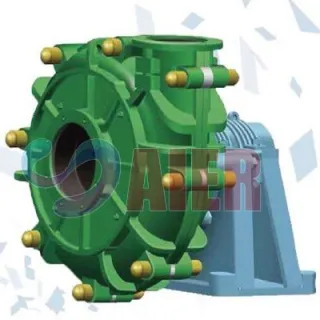Nov . 16, 2024 05:36 Back to list
high quality casting slurry pump part
High-Quality Casting Slurry Pump Parts An Overview
In the industrial world, slurry pumps play a crucial role in transporting abrasive and viscous materials, particularly in sectors such as mining, wastewater treatment, and chemical processing. A high-quality casting slurry pump part is essential to ensure operational efficiency, durability, and minimal downtime. This article delves into the importance of quality casting in slurry pump components, the materials used, and the latest trends in the industry.
Importance of High-Quality Casting
Casting is a manufacturing process where molten metal is poured into a mold and allowed to solidify, forming a specific shape. In the context of slurry pumps, high-quality casting ensures that the components have the necessary strength and resistance to wear and corrosion. Given the abrasive nature of slurries—which can contain solid particles, chemicals, and other harsh substances—superior casting techniques provide the resilience required for pump parts such as impellers, casings, and wear plates.
A defect in casting can lead to premature wear and failure, resulting in costly repairs and increased operational downtime. For industries reliant on slurry pumps, ensuring that the pump components are made from high-quality cast materials is not just a matter of efficiency but also of safety and environmental compliance.
Materials Used in Casting
The primary materials used in the casting of slurry pump parts include cast iron, stainless steel, and various alloys. Cast iron is favored for its excellent wear resistance and ability to dampen vibrations, making it suitable for many slurry applications. However, in situations where the slurry is corrosive, stainless steel or specialized alloys may be required. For instance, high-chrome alloys are used for their exceptional hardness, extending the life of pump impellers and liners.
Innovation in material science continues to play a significant role in the evolution of slurry pump parts. Engineers are constantly researching and developing new materials and coatings designed to enhance service life and resistance to the aggressive conditions often found in pumping operations.
Trends in Casting Technology
high quality casting slurry pump part

The slurry pump industry is witnessing several trends related to casting technology. One of the most significant advancements is the use of 3D printing for producing complex pump components. This technology allows for the creation of intricate designs that can optimize fluid flow and reduce turbulence, leading to improved pump efficiency.
Additionally, computer-aided design (CAD) and simulation software are facilitating better accuracy in casting processes. These tools enable engineers to predict how materials will behave under stress and to adjust designs accordingly, reducing waste and improving the overall quality of cast parts.
Moreover, manufacturers are increasingly adopting quality control measures such as non-destructive testing (NDT) methods to ensure that every cast component meets industry standards. These tests can identify flaws that may not be visible during visual inspections, enhancing the reliability of the slurry pump.
Selection and Maintenance
Choosing the right casting slurry pump parts involves understanding the specific requirements of the application. Factors such as the type of slurry, the particles' size and concentration, and the operating conditions (temperature and pressure) should all be considered when selecting components.
Regular maintenance is equally important in extending the life of slurry pump parts. Recommendations often include routine inspections, monitoring of wear and efficiency, and timely replacement of worn parts. By adhering to maintenance schedules and using high-quality casting parts, industries can ensure their slurry pumps operate effectively, reduce energy consumption, and lower the total cost of ownership.
Conclusion
In conclusion, high-quality casting slurry pump parts are integral to the efficient operation of various industrial applications. As industries continue to evolve, the emphasis on material quality, advanced casting technologies, and maintenance practices will only grow stronger. Investing in reliable casting solutions will not only enhance the performance of slurry pumps but also contribute to sustainability and cost-effectiveness in industrial operations. By remaining at the forefront of innovation, manufacturers can meet the ever-increasing demands of the market and ensure durability and efficiency in their pumping systems.
-
Wholesale Casting Dredge Pump Part - High Quality China Manufacturers & Suppliers
NewsJul.04,2025
-
High Quality Slurry Pump Seals Reliable China Suppliers & Manufacturers
NewsJun.24,2025
-
High Quality Portable Submersible Slurry Pump Supplier & Manufacturer from China
NewsJun.10,2025
-
Slurry Pump Parts Manufacturer – High Quality Rubber Spare Parts from China
NewsJun.10,2025
-
High Quality 1/3 HP Submersible Sump Pump with Vertical - Reliable Supplier & Factory Price
NewsJun.10,2025
-
High-Efficiency Centrifugal Slurry Pumps India
NewsJun.10,2025
